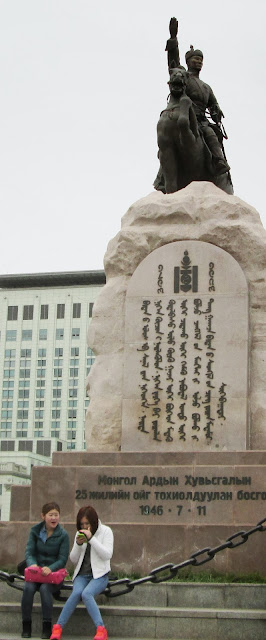Vacation Destination – China
We have just returned from an Asian vacation, Beijing, China
was our first stop.
When one interested in textiles thinks of China, one thinks
of silk. In the next three weeks we
will look at the silk industry in China from its inception through its
processing and finally my discovery of a great, modern silk product.
 |
| Ernest E. Leavitt Jr. Arizona State Museum University of Arizona |
The Silk Road, that magical journey, which brought spices,
gems and silk to Europe, was an arduous journey of over 5,000 miles from the
Mediterranean to China. The riches were
beyond imagination and the greatest of these riches was silk. The term “silk road”. Seidenstrasse, was
coined by a German explorer named Baron Ferdinand von Richtofen in 1877. Most maps depict the Silk Road as departing
from Xi’an, China although most of China’s silk was produced further
south. Xi’an was the capital of China
from 206 BCE to 25CE during the Han dynasty, when Chinese emperors first
expressed an interest in the lands beyond their western frontiers and when Rome
was equally interested in acquiring Chinese silks. Silk was imported to Rome
both as dyed thread and woven cloth, which was often unwoven to be rewoven into
sheer fabrics that were more to Roman tastes.
The earliest excavated silk is a group of ribbons, threads
and woven fragments, all dyed red, dated to 3,000BCE. Archeological remains reveal that already in Shang
times(1600-1050 BCE) Chinese were making fine silk damasks and elaborate silk
embroideries. Silk fabric was used to
pay taxes and salaries and to purchase peace in the coursed of diplomatic
negotiations. Repeated invasions of Mongols from the north forced China to
begin paying raiders quantities of silk, as much as 450,000 pieces of silk per
year to keep them at bay.
The state was in control of the silk industry. Emperors set
up weaving and embroidery mills to satisfy the needs of their courts. These institutions were managed by
appointees of the emperor, whose mission was to provide the raw materials, pay
the craftsmen and supervise the distribution of the finished products.
In legendary periods the thwarted love of the 2 deities- the
male cowherd and the female weaver, who were allowed to meet 1 day a year, is a
reminder of the Chinese division of the day’s work: men plow, women weave. The Weaver is the alpha star of Lyra constellation. She weaves all year round by the side of the
Milky Way. On the opposite side is the
Bootes constellation, tilling his fields and harnessed to the chariot of Ursa Major.












